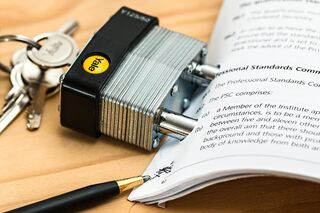Attention
What's in That Fine Print You Didn't Read?
A Personal Perspective: Pay attention to the fine print.
Posted April 11, 2022 Reviewed by Jessica Schrader
Key points
- "Fine print" is becoming ubiquitous in our litigious society.
- "Fine print" comes in many forms, from simple footnotes to lengthy contracts.
- Sometimes the "fine print" is only implied and you have to seek it out on your own.
There’s a saying, “The LARGE PRINT GIVETH, and the small print taketh away.” We usually associate this concept with the big bold promise of benefits in an advertisement for a product or service we want. But, nearly hidden in the body copy is an asterisk (*) indicating a footnote that reveals in fine print—the caveat emptor (what the buyer should beware).
Dear reader, read the fine print! There was a time when I didn’t and I ended up in the hospital for seven days and couldn’t walk for two months.
My doctor prescribed an antibiotic for an infection that developed from a bicycling injury. He asked, “Have you taken this antibiotic successfully before?” I replied, “Yes, 13 years ago.”
That was good enough for him, and he wrote me the prescription. I then took it to my pharmacy. The pharmacist asked me, “Have you ever taken this antibiotic?” Again, I replied, “Yes, 13 years ago.” She handed me my prescription with a drug information sheet stapled to the bag.
Five days later my legs started to swell, and that’s when I finally decided to read the drug information sheet on the antibiotic—two full pages of fine print—and learned that people my current age were more likely to suffer adverse reactions to it. I immediately stopped taking it, but the damage was done. For the next two months, I was bedridden and nearly helpless. Lesson learned: Always read the drug info sheet.
It's Long and Tedious for a Reason
But, what about those long User Agreements and Terms and Conditions for the software and apps we use on our computers and phones? They come with miles of fine print (that go on and on like a George R. R. Martin novel, but not nearly as interesting). I sometimes think they are exhaustingly long so that we won’t be inclined to read them and discover what the true costs are.
Then there are those radio ads that have some guy at the end speed talking legalese that no one can understand, but hey, that’s the fine print. Similarly, there are those TV commercials for pharmaceuticals, where they read off a list of scary adverse reactions.
Processed foods will have a Nutrition Facts/Calorie Chart and an Ingredients List, read those carefully—that’s the fine print—which will warn you about chemical components that aren’t actually food, but preservatives, color enhancers, and artificial flavorings instead.
It is said that we live in a litigious society, and because of that we are inundated with fine print, but just because we don’t believe we’ll ever sue someone doesn’t mean we should ignore the fine print.
Read to Learn the Limitations and Exceptions
Credit card applications, insurance policies, warranties, and guarantees all carry loads of fine print: what’s covered, what’s not, what the limitations are, and what the exceptions are (which is the real fine print).

Then there are the weasel words like these (that spell out the caveats if you read far enough): “Automatically Renews,” "Early Termination Fees," "Restocking Fee,” "Liability Waiver," “Void the Warranty,” and “Opt Out” among dozens of others all of which taketh something away (often your rights).
People complain that life doesn’t come with an instruction book, but it does if we’re willing to find it. My primary point in writing this post is to note that there is fine print everywhere, but sometimes we have to look for it. We need to use our critical thinking skills to discern what is best for us.
News Sources Have a Bias—That Is the Fine Print
For example, humorous news sites like Babylon Bee (whose motto is Fake News You Can Trust) and The Onion warn their readers upfront that their content is satire. On the other hand, however, the supposed legitimate news sites don’t even offer their audiences any fine print. You have to seek it out on your own by researching the ownership, learning who the people behind it are, and what they value. Or you can carefully read the stories and look for the slant—oftentimes the bias is subtle, but other times it’s glaring.
There’s even fine print in relationships. We call them red flags, but you have to look out for them. My cousin once told me, “Whatever will end a relationship was perceptible on the first date, but it is only through hindsight that we can finally see it.”
Don’t learn by hindsight that you should’ve read the fine print. Read it now ... you’ll thank me later.


